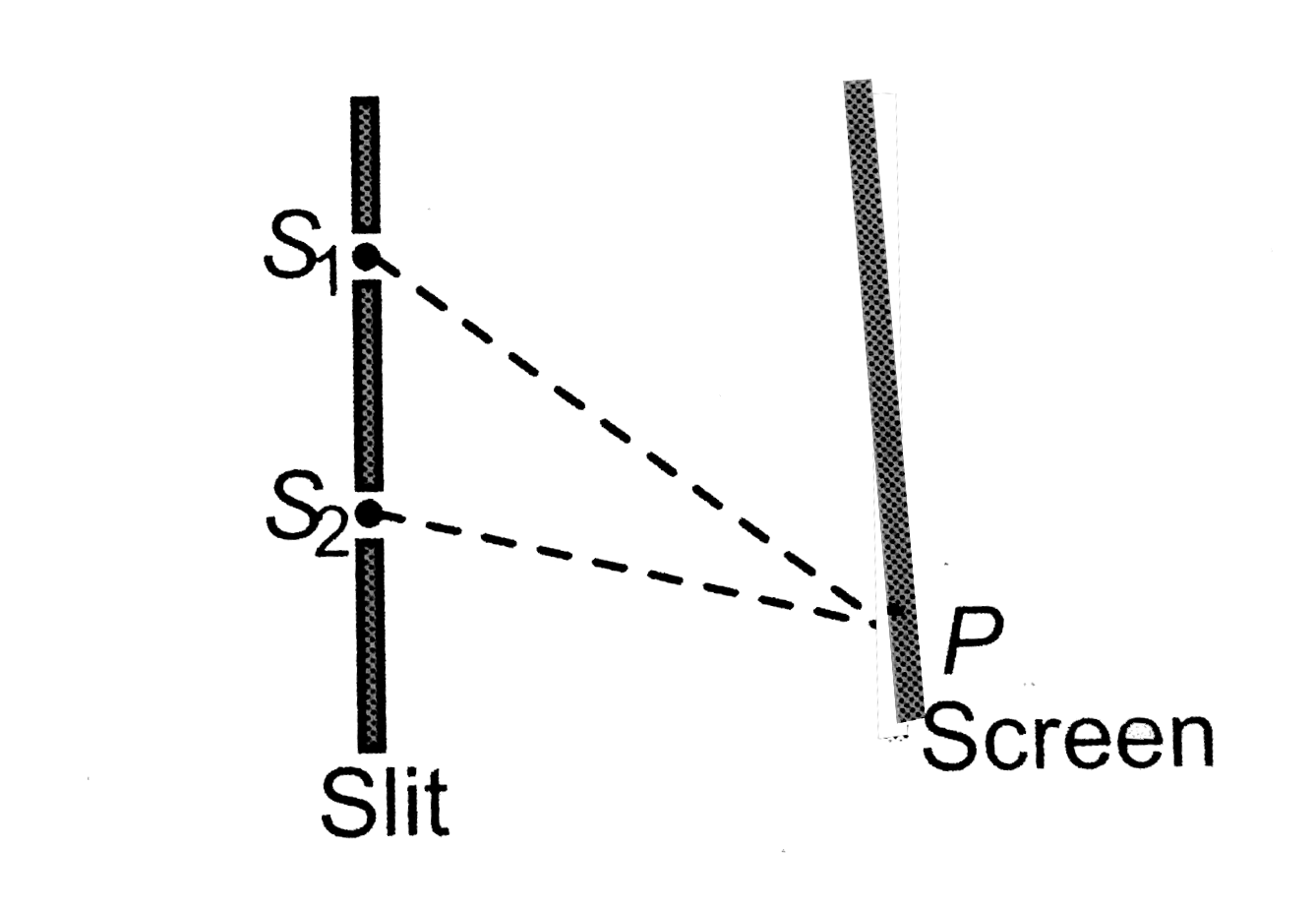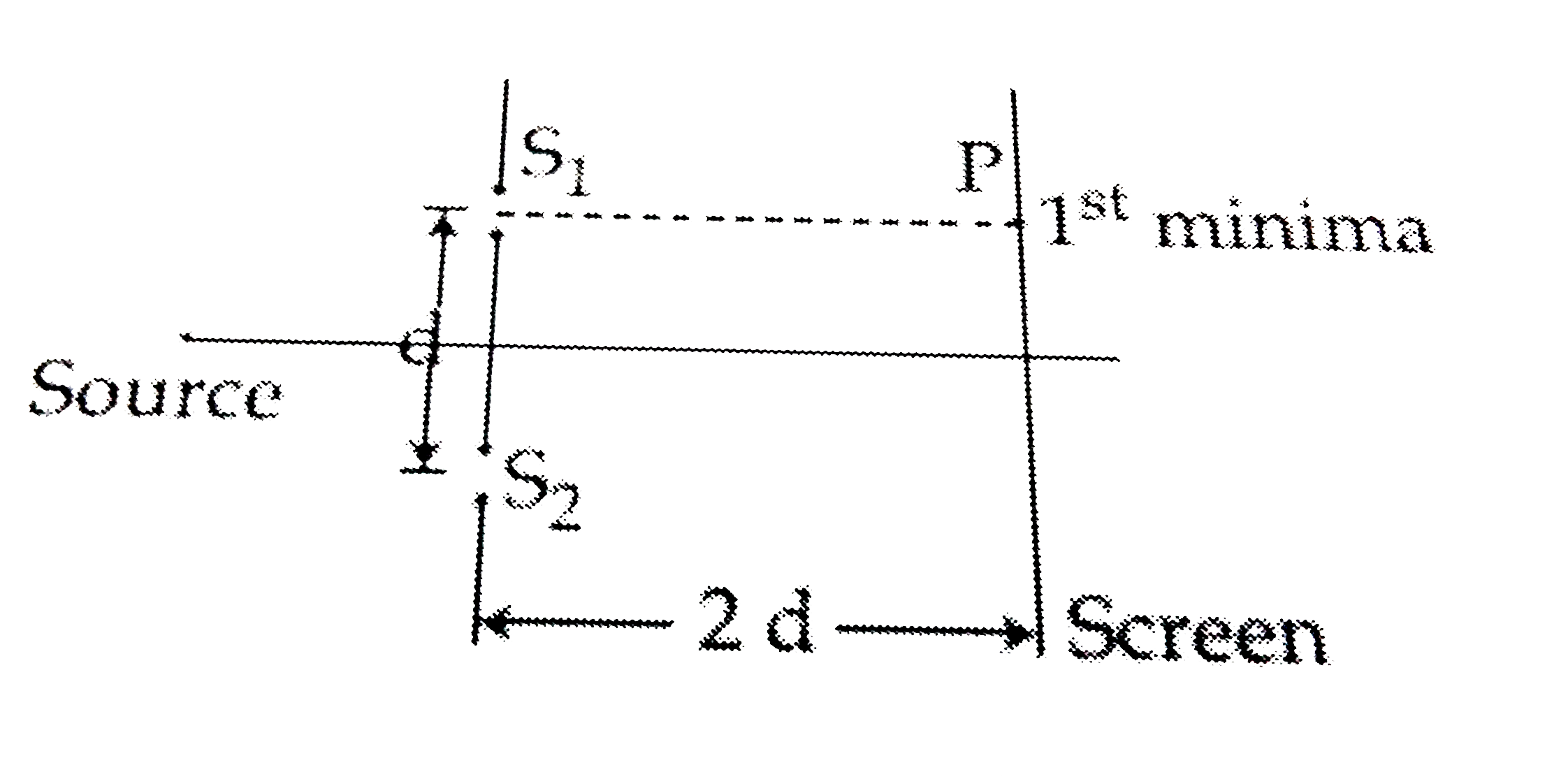In Young's Double slit experiment, a thin glass mica strip of thickness (t=8λ) is pasted infront of slit S1. If the same strip is now shifted in front of other slit S2. If the number of fringes which will cross the central point on the screen in N. Find N? (d>>λd and nmica=1.5)
The correct Answer is:8
To solve the problem, we will analyze the situation step by step.
Step 1: Understanding the Setup
In Young's Double Slit Experiment, we have two slits, S1 and S2. A thin glass mica strip of thickness t=8λ is placed in front of slit S1. The refractive index of mica is given as nmica=1.5.
Step 2: Calculate the Optical Path Difference
When light passes through the mica strip, the optical path length increases due to the refractive index. The optical path length for light passing through the mica strip can be calculated as:
Optical Path Length=n⋅t
For the mica strip:
Optical Path Length=1.5⋅(8λ)=12λ
However, since the light in air travels with a refractive index of 1, the effective path difference introduced by the mica strip when placed in front of S1 is:
Δx=(n−1)⋅t=(1.5−1)⋅(8λ)=0.5⋅(8λ)=4λ
Step 3: Determine the Number of Fringes
The path difference of 4λ means that at the central point on the screen, the light from S2 will have to travel an additional 4λ to compensate for the path difference created by the mica strip in front of S1.
In Young's experiment, the condition for constructive interference (bright fringes) is given by:
Δx=mλ
where m is an integer (order of the fringe).
In this case, we have a path difference of 4λ, which means that the central maximum (where the path difference is zero) will shift to a new position where the path difference is compensated by the additional 4λ.
Step 4: Counting the Fringes
When the mica strip is moved to S2, the same path difference of 4λ will cause the fringes to shift. The number of fringes that cross the central point can be calculated as:
- The total number of fringes that will cross the central point is equal to twice the number of fringes created by the path difference of 4λ.
Since 4λ corresponds to 4 fringes (0, 1, 2, 3, 4), when the strip is moved to S2, these 4 fringes will shift, and thus:
N=4 (from S1)+4 (from S2)=8
Final Answer
Thus, the total number of fringes N that will cross the central point on the screen is:
8
In Young's Double Slit Experiment, we have two slits, S1 and S2. A thin glass mica strip of thickness t=8λ is placed in front of slit S1. The refractive index of mica is given as nmica=1.5.
When light passes through the mica strip, the optical path length increases due to the refractive index. The optical path length for light passing through the mica strip can be calculated as:
Optical Path Length=n⋅t
For the mica strip:
Optical Path Length=1.5⋅(8λ)=12λ
However, since the light in air travels with a refractive index of 1, the effective path difference introduced by the mica strip when placed in front of S1 is:
Δx=(n−1)⋅t=(1.5−1)⋅(8λ)=0.5⋅(8λ)=4λ
The path difference of 4λ means that at the central point on the screen, the light from S2 will have to travel an additional 4λ to compensate for the path difference created by the mica strip in front of S1.
Δx=mλ
where m is an integer (order of the fringe).
When the mica strip is moved to S2, the same path difference of 4λ will cause the fringes to shift. The number of fringes that cross the central point can be calculated as:
- The total number of fringes that will cross the central point is equal to twice the number of fringes created by the path difference of 4λ.
N=4 (from S1)+4 (from S2)=8
Thus, the total number of fringes N that will cross the central point on the screen is:
8
Topper's Solved these Questions
- TEST PAPERSBOOK - RESONANCE ENGLISHCHAPTER - TEST PAPERSEXERCISE - PART - II PHYSICS
106 Videos
- SIMPLE HARMONIC MOTION BOOK - RESONANCE ENGLISHCHAPTER - SIMPLE HARMONIC MOTION EXERCISE - Advanced Level Problems
13 Videos
- TEST SERIESBOOK - RESONANCE ENGLISHCHAPTER - TEST SERIESEXERCISE - PHYSICS
130 Videos
Similar Questions
In a Young's double slit experimental arrangement shown here, if a mica sheet of thickness t and refractive indec μ is placed in front of the slit S1, then the path difference (S1P−S2P) is

View SolutionIn a Young’s double slit experiment, the ratio of the slit’s width is 4 : 1. The ratio of the intensity of maxima to minima, close to the central fringe on the screen, will be:
View SolutionIn Young's double slit experiment a mica sheet of thickness t and refractive index μ is introduced in the path of ray from the first source S1 By how much distance thhe fringe pattern will be displaced.
View SolutionConsider a Young's double slit experiment as shown in figure. What would be the slit separation d in terms of wavelength λ such that the first minima occurs directly in front of the (S1) ?

View SolutionIn the Young's double slit experiment , a mica slip of thickness t and refractive index μ is introduced in the ray from first source S1 . By how much distance fringes pattern will be displaced ? (d = distance between the slits and D is the distance between slits and screen)
View SolutionIn the Young's double slit experiment , a mica slip of thickness t and refractive index μ is introduced in the ray from first source S1 . By how much distance fringes pattern will be displaced ? (d = distance between the slits and D is the distance between slits and screen)
View SolutionIn Young's double-slit experiment, let A and B be the two slit. A thin film of thickness t and refractive index μ is placed in front of A. Let β= fringe width. Then the central maxima will shift
View SolutionIn Young's double slit experiment with light of wavelength λ=600nm, intensity of central fringe is I0. Now one of the slit is covered by glass plate of refractive index 1.4 and thickness t=5μm. The new intensity at the same point on screen will be :
View SolutionIn a Young's double slit experiment , the path difference at a certain point on the screen ,between two interfering waves is 18th of wavelength.The ratio of the intensity at this point to that at the center of a bright fringe is close to :
View SolutionIn the standard Young's double slit experiment, the intensity on the screen at a point distant 1.25 fringe widths from the central maximum is (assuming slits to be identical)
View Solution
